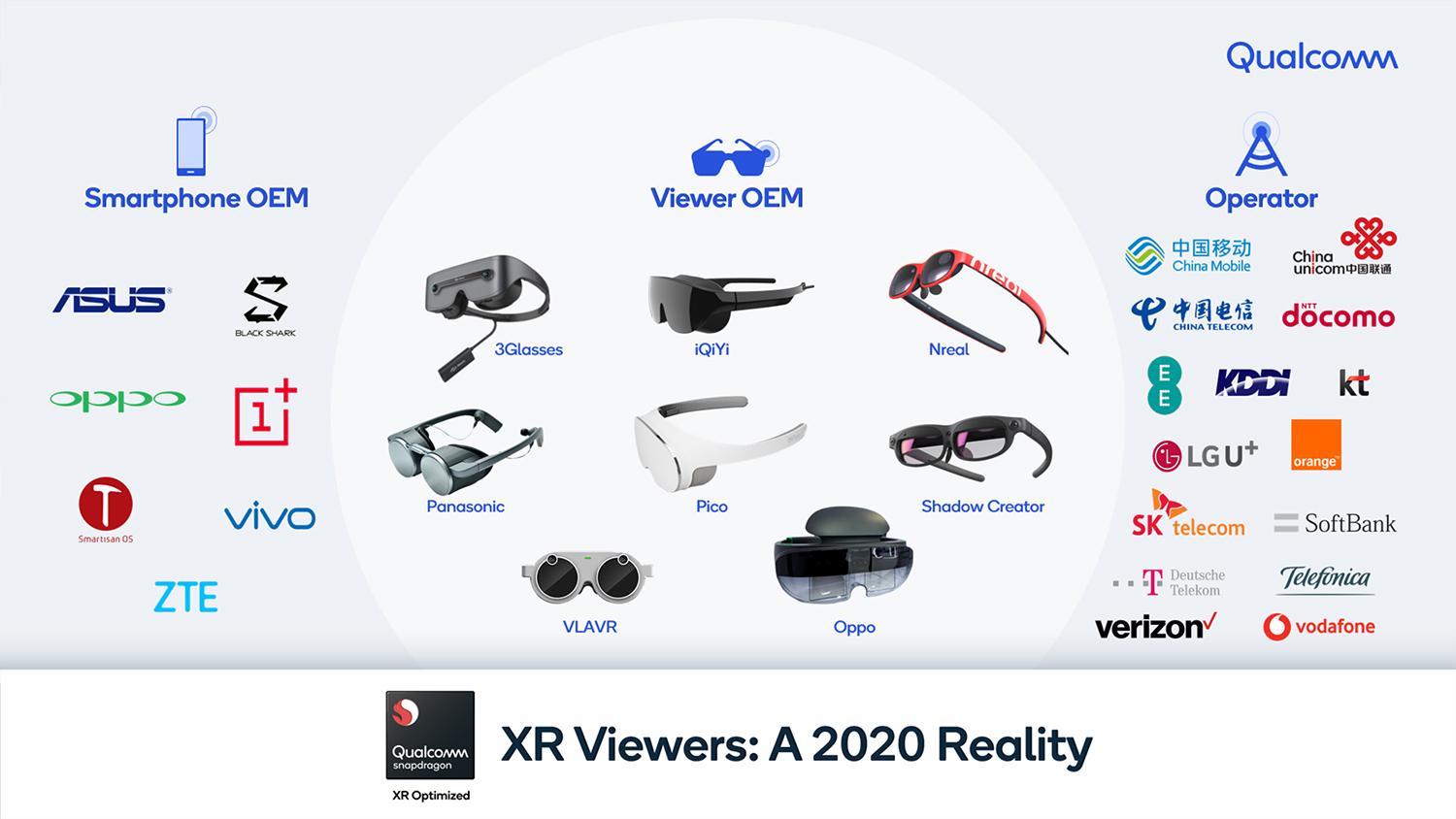
Qualcomm previews a new line of smartphone-linked XR viewers for 2021
by Deirdre O'DonnellQualcomm has announced a range of XR viewers, a novel product category possible due to 5G speeds and bandwidth. They are intended to deliver high-quality content to be supported by the smartphones they connect to via USB type C, and will be made by companies such as Panasonic and OPPO.
The advent of 5G technology is expected to facilitate new dimensions of services and products that leverage its potential for enhanced data-transfer rates and volumes. Qualcomm now envisions that one of these will be the XR viewer.
It involves a recently-developed variation on smart glasses which deliver consumer- or enterprise-grade XR applications, examples of which include AR conferencing, gaming and general immersive experia. They will be driven by phones powered by either the Snapdragon 855-series or 865 SoCs, to which these viewers connect via USB type C (which, frankly, sounds like a major potential pitfall of this new system).
This will also require that the makers of the phones in question develop XR content for each of these phones. To date, the brands ZTE; Vivo; OPPO; OnePlus; Black Shark and Asus have signed up to do so. In the case of the latter, it has announced that its ROG Phones will be compatible with the Qualcomm XR viewer program.
These products also have a range of manufacturing partners who have supplied their own takes on the new XR viewer standards set out via the Qualcomm XR Optimized Certification Program. It calls for specs such as 6 degrees of freedom (6DoF) head-tracking, validated thermal-management and validated display calibrations. One of these, OPPO, has already showcased its viewer; others include Panasonic, Shadow Creator, Pico, Nreal, iQIYI and 3Glasses.
These viewers will be supported and distributed through carriers in several countries. They include Vodafone, Verizon, Telefonica, SK Telecom, Orange, NTT DOCOMO, KDDI, LG Uplus, EE, Deutsche Telekom, China Telecom, China Mobile, and China Unicom. Qualcomm projects that these partners will be prepared to offer XR viewers to customers as early as 2021.